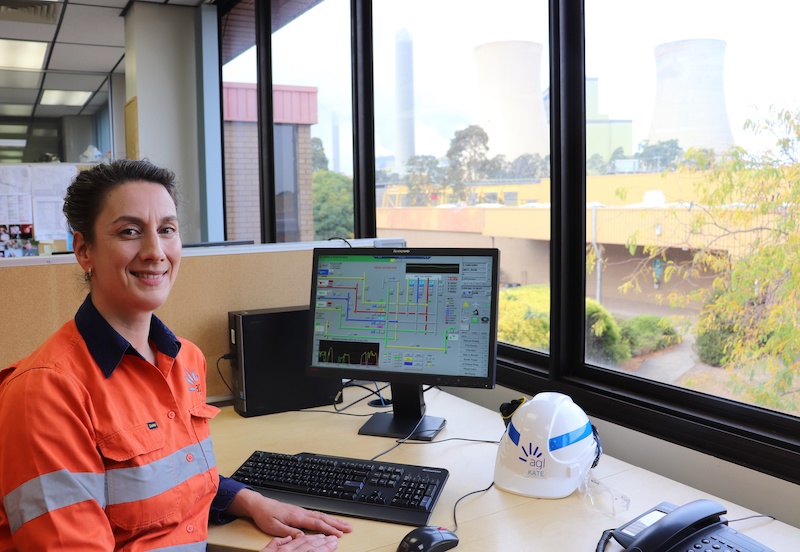AGL is offering its engineers a powerful opportunity to achieve an internationally recognised standard, constantly improve their up-to-date knowledge and boost their market value by earning their Chartered credential.
Having worked for 20 years as an engineer, Kate Wenig had always planned on earning her Chartered engineer credential but, she says, life got in the way.
But when her employer AGL offered her the opportunity, after recently setting up a partnership with Engineers Australia to support their engineers to Chartered level, Wenig jumped at the chance.
“Why did I want it? What is the value of the Chartered engineer credential? Well, to me, it’s the gold standard of engineering,” the civil engineer said.
“It is something that is personally and professionally very important.
“I love the clarity of the pathway that Engineers Australia provides to us as an institution. It makes clear my commitment to ethics and to continuing professional development. And it aligns with the values of AGL and the company’s commitment to excellence in engineering.”
Mark of expertise
The Chartered program was implemented within AGL, and in partnership with Engineers Australia, by Barry Millar, AGL’s General Manager Technical Services.
The plan is to have all of AGL’s engineers across Australia reach Chartered status over 2019, and to constantly mentor graduate engineers towards the program.
Why set up such a program? What’s in it for AGL? There are numerous benefits, Millar said. One is the enormous positive it offers to the business in the recruitment market.
Young engineers looking for true career advancement opportunity are buoyed by the idea of an in-house Chartered engineer program. This was confirmed recently when AGL received numerous applications for spaces on the company’s graduate program.
Next is the positive professional effect within the organisation. This reveals itself in terms of the knowledge level of the engineers, in the continued professional development required to retain one’s Chartered engineer status, and in the fact that already strong risk management, compliance and quality processes will constantly be updated.
Gaining accreditation
Chartership will help to demonstrate and communicate the company’s risk and compliance strengths, Millar said.
“The program also links our business to an amazing amount of resources within Engineers Australia,” he said.
“That really helps our engineers and provides an additional network to discuss and share ideas.
“This linkage with other experts and constant improvement of knowledge levels will absolutely help to retain the high quality of work being done within the business. It will help our engineers to come up with creative solutions and it will have a cascade effect in terms of professionalism and respect. It will create within the company an even greater pride in engineering, and a sense of pride always has a good result on productivity and outcomes.”
The Chartered status via Engineers Australia can be earned across 24 areas of engineering practice, from chemical or biomedical engineering to fire safety, leadership and management, and systems engineering.
Members can become Chartered in one or more areas, and formal education, informal education and work experience are all taken into account.
Benefits for the individual include professional recognition, improved value in the market and recognition within their own business. This last point, Wenig said, is an important one.
“This is a large company and there are a lot of people who don’t know me or haven’t worked directly with me,” she said.
“Everybody in the business already respects the engineers, but they might see my name on a piece of paper and notice the Chartered Engineer credential, and that might make them think differently about me. It might offer them even more confidence and it might alter their perception around how I like to operate as an engineer in the group. Most importantly, it should make them realise that I am interested in continually improving the engineering standard within our group, encouraging a sharing and mentoring culture.”

For an organisation, benefits of staff engineers earning their Chartered standard are many and varied. From an uplift in already excellent risk-management processes and quality assurance outcomes, and from even greater public safety and public relations benefits, to attraction and retention of talent, the Chartered engineer credential offers a powerful mix of positives.
“Actually, it was really affirming to go through the process to becoming Chartered,” Wenig said.
“As you’re working through and writing down your competencies and figuring out whether you have attained the necessary Stage Two experience, you begin to realise that you have actually demonstrated those skills many times throughout your career.
“Once you have a specific competency it becomes a part of your toolkit and you use it again and again, so after a small while it simply becomes normal. But the process to become Chartered made me reflect on what I had achieved as an engineer and forced me to think back to where and when I first picked up specific competencies. It makes you realise what you have accomplished, and that is a very good feeling.”
Interested in learning more about the Chartered credential? You may already have what it takes to become Chartered. Find out more here and start your pathway to Chartered today.
